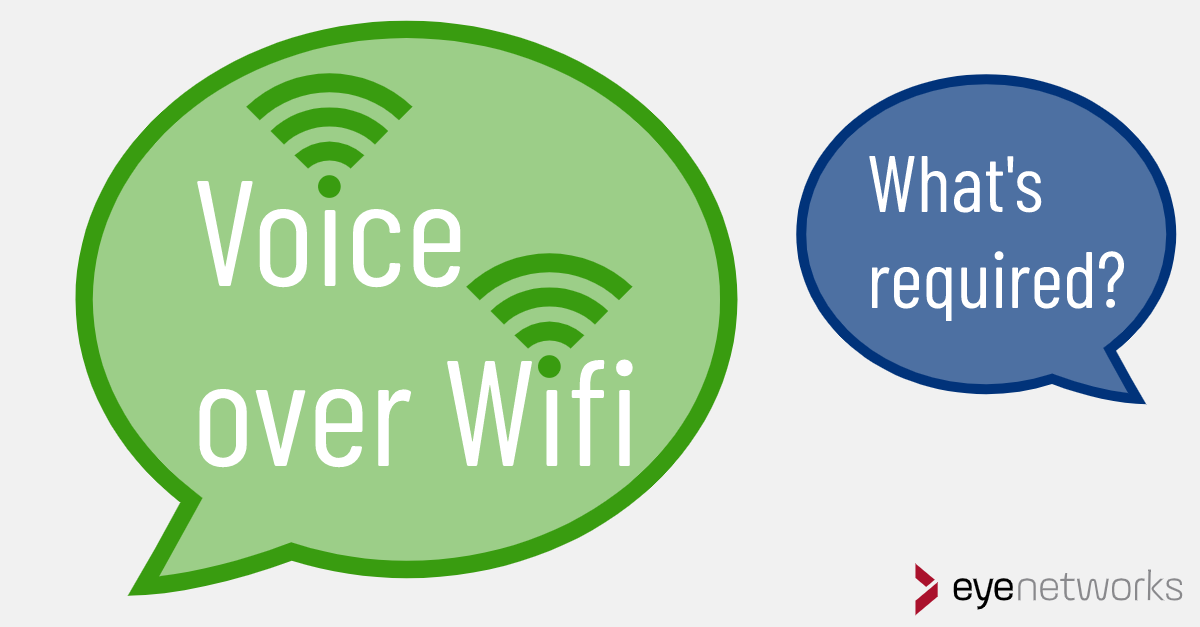What is the point of VoWiFi – and do you have a wireless network that is ready to handle it?
Voice over wifi services for private households was first launched in Norway by Telenor in 2016–until then, it had only been available to businesses.
But what exactly is the point of using Wi-Fi connections for voice? Can’t we just use the phone and cellular network?
What is Voice Over Wi-Fi?
VoWi-Fi or VoWLAN, in Norway marketed under the name Wifi Tale (Wi-Fi Voice), is voice traffic and messages delivered over a wireless internet connection.
Now you might think “much like Skype, then” — and yes, the transfer technology is the same for VoWiFi and other message and conferencing services.
The big difference is that this is seamlessly integrated with regular telephony from your mobile operator. You can transfer from Wi-Fi to mobile network during a call. And you use a phone number to get to people without worrying about what kind of network they are on when they take the call. Operators also promise “HD” sound quality.
To use VoWiFi, your mobile phone must have software from the mobile operator that supports it, and your router must be able to give priority to voice traffic.
Why Use VoWiFi?
Everyone has seen that mobile coverage for text and voice indoors can be bad or missing altogether. And as with Wi-Fi coverage, this depends a lot on the building layout and materials:
- Walls and windows can block radio waves.
- The building can be located in a radio shade.
- Indoor coverage can vary greatly from room to room in a building.
When mobile coverage is insufficient, there are two main options for delivering voice calls and text messages:
- Wireless internet / Wi-Fi
- Nano or pico cells, which are mobile base stations that cover a limited area, such as a building.
The great advantage of choosing Wi-Fi is quite obvious – this is infrastructure that already exists in the vast majority of locations.
By not building new nano or pico cell infrastructure, you save time, resources, and strain on the environment.
What is needed for VoWiFi to work well?
If you want to have working calls over a wireless network, there are two important requirements the wireless network must meet and be designed for: capacity and coverage.
- Capacity means that there is enough bandwidth to deliver voice over Wi-Fi at the same time as other traffic on the wireless network.
- Coverage means you do not have dead zones for wireless and have enough capacity anywhere you want to be able to make and receive calls.
Voice call traffic, which is what we’re talking about here, is particularly sensitive to fluctuations in capacity. Therefore, it is important to have high capacity in the entire coverage area and to avoid situations where a single client or device can throttle the capacity of everyone else on the network – a so-called bad apple. See also Bad apple: How one gadget with bad coverage can spoil your wireless network.
In addition to a network design that addresses capacity and coverage, VoWiFi needs the router to give priority to voice traffic and your ISP to do the same.
Are you ready for VoWiFi?
You will find several guides here in Wi-Fi Central to help you test and secure the capacity of your home network.
The two main factors to watch for VoWiFi, are sufficient signal strength and coverage/roaming.
1. Make sure that all devices get at least -67 dbm in signal strength
In order to have a conversation with minimal problems, no device that uses VoWiFi imust have a weaker signal than -67 dBm. Make sure to run any tests using the same type of device that you will use to make calls; use your phone, not your PC or tablet.
Find out more about measuring Wi-Fi signal strength can in Good wireless signal strength–what is required?
2. Make sure you have good coverage and may roam all over the home
If you get a signal that is weaker than -67 dBm, you need more wireless access points. You will also probably need a setup that will allow your mobile device to move to another access point if necessary during the call. This not only allows you to move while you are talking, but also prevents other active connections in your home from consuming all the capacity where you are.
Measuring coverage is best done with a heat map, see Map your wireless network with a heatmapper.
If you want to perform a full check of what your Wi-Fi solution can do, you should find helpful advice in Testing wireless: A Reality Check for Wi-Fi Solutions.
Read More About VoWiFi
VoWiFi is also a welcome service for many businesses. Read about how and why Tussa Energy uses this service: (in Norwegian)
Krafttak for innendørsdekning: Energiselskapet Tussa tar i bruk WiFi Tale (artikkel fra Telenor på Jobb Smartere)
Article by Jan Pedro Tumusok and Jorunn Danielsen
